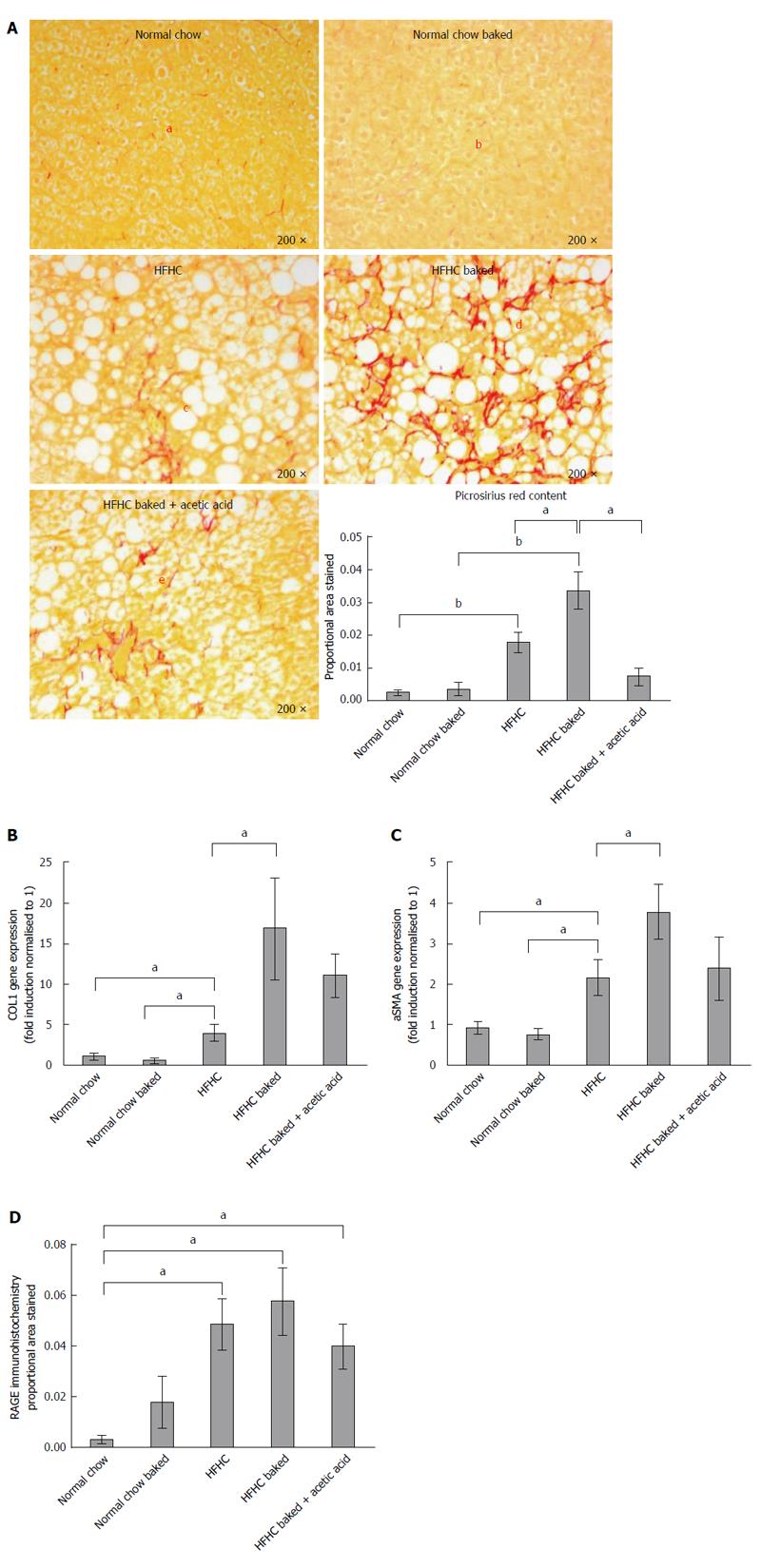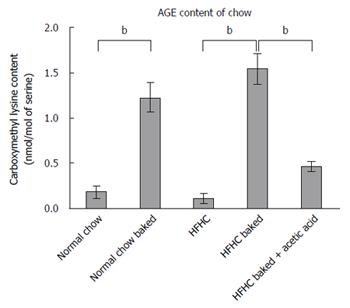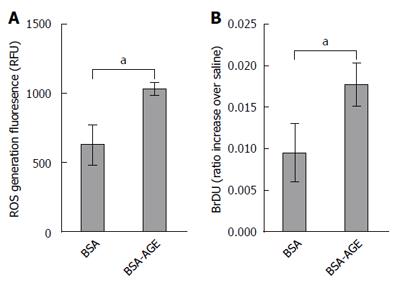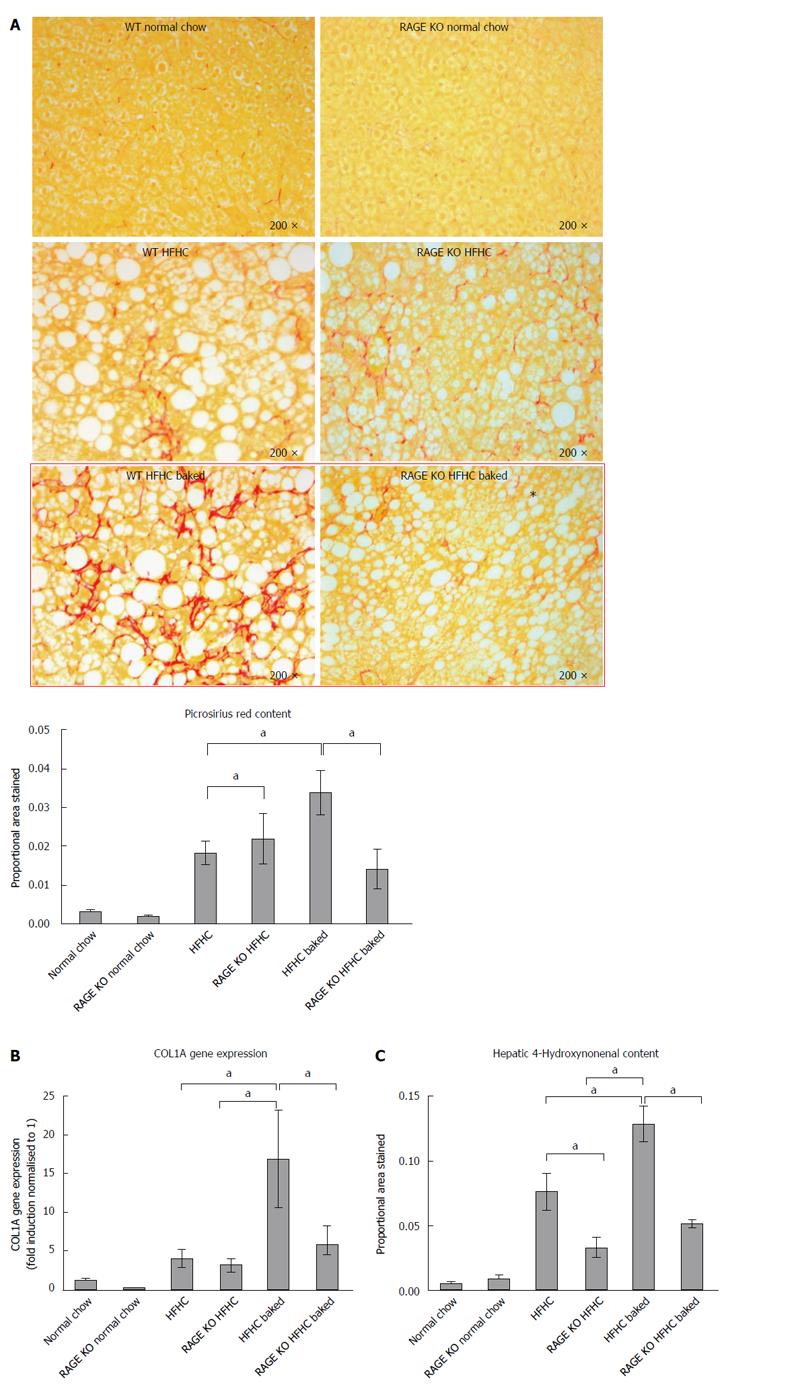Copyright
©The Author(s) 2016.
World J Gastroenterol. Sep 21, 2016; 22(35): 8026-8040
Published online Sep 21, 2016. doi: 10.3748/wjg.v22.i35.8026
Published online Sep 21, 2016. doi: 10.3748/wjg.v22.i35.8026
Figure 1 Novel 33 wk high fructose, high cholesterol dietary model induced changes of non-alcoholic steatohepatitis.
A: Haematoxylin and eosin stained sections showing ballooning after high fructose, high cholesterol (HFHC) diets (examples of ballooning circled). At right, ballooning scores determined morphometrically; B: Oxidative stress revealed by the immunohistochemical localisation of 4-hydroxynonenal; C: Steatosis grade (grade 0, no fat; grade 1, steatosis occupying less than 33% of the hepatic parenchyma; grade 2, 34%-66% of the hepatic parenchyma; grade 3, more than 66% of the hepatic parenchyma); D: Plasma levels of alanine transaminase (ALT) in the different treatment groups; and E: Lobular inflammation (grade 0:none; grade 1, 1-2 foci/field; grade 2, 3-4 foci/field; grade 3, more than 4 foci/field). Ballooning and oxidative stress were significantly increased by raising the AGE content of the HFHC diet. These changes were attenuated when dietary AGE content was reduced by acetic acid premarination. aP < 0.05, bP < 0.01, cP < 0.001.
Figure 2 Elevation in profibrotic and proinflammatory cytokine expression in the liver.
A: Picrosirius red staining of collagen showing centrilobular sinusoidal fibrosis induced by the 33 wk high fructose, high cholesterol (HFHC) dietary model (c). In animals receiving the HFHC diet, fibrosis was further increased by raising the advanced glycation end products (AGEs) content of the diet (d) and attenuated when dietary AGE content was reduced by acetic acid premarination prior to baking (e). However increasing the AGE content of normal chow did not cause increased fibrosis (compare a, b). Hepatic gene expression of COL1A (B) and αSMA (C) were also significantly increased by raising the AGE content of the diet. Expression of RAGE, a key receptor for AGEs, was elevated in the HFHC model but this was not affected by varying the AGE content of the diet, aP < 0.05, bP < 0.01 (D).
Figure 3 Levels of carboxymethyl lysine in the different diets.
Baking the high fructose, high cholesterol (HFHC) diet and normal chow increased CML content of feed by > 6 fold. Levels of CML were markedly reduced by premarinating with vinegar prior to baking, bP < 0.01.
Figure 4 Effects of advanced glycation end products on reactive oxygen species and proliferation in isolated Kupffer cells exposed to physiological amounts of dietary advanced glycation end products compared with bovine serum albumin vehicle.
A: Advanced glycation end products (AGEs) increased ROS generation as measured by 2’,7’-dichlorodihydrofluorescein diacetate. B: AGEs increased cell proliferation as assessed by BrDU incorporation, aP≤ 0.05.
Figure 5 Effects of the high fructose, high cholesterol diet and dietary advanced glycation end products manipulation on fibrosis in the receptor for advanced glycation end products KO animals.
A: The absence of receptor for advanced glycation end (RAGE) attenuated the effects of increasing the advanced glycation end products (AGEs) content of the high fructose, high cholesterol (HFHC) diet as evidenced by a reduction in picrosirius red staining to levels observed in animals on the HFHC diet alone; B: There was a commensurate reduction in COL1A gene expression; C: A reduction in hepatic 4-hydroxynonenal content (aP < 0.05).
- Citation: Leung C, Herath CB, Jia Z, Andrikopoulos S, Brown BE, Davies MJ, Rivera LR, Furness JB, Forbes JM, Angus PW. Dietary advanced glycation end-products aggravate non-alcoholic fatty liver disease. World J Gastroenterol 2016; 22(35): 8026-8040
- URL: https://www.wjgnet.com/1007-9327/full/v22/i35/8026.htm
- DOI: https://dx.doi.org/10.3748/wjg.v22.i35.8026













